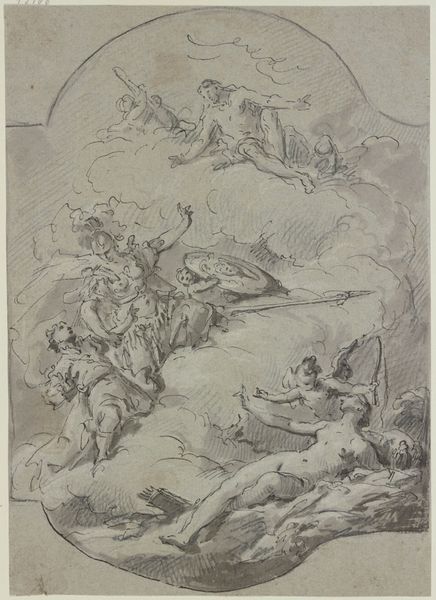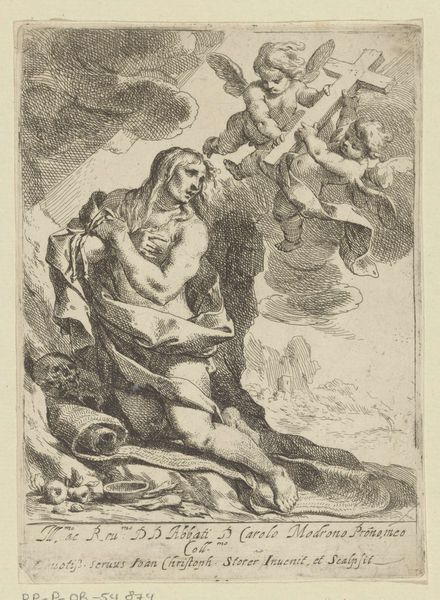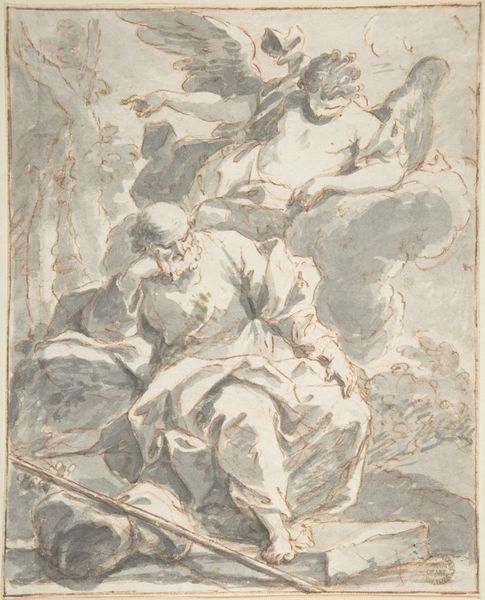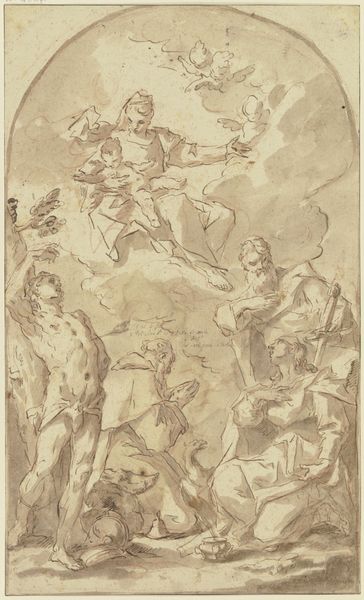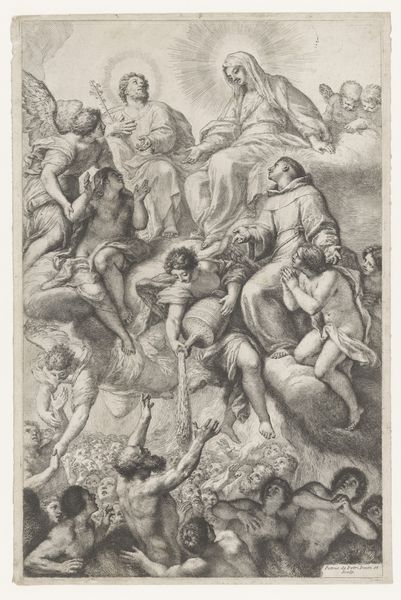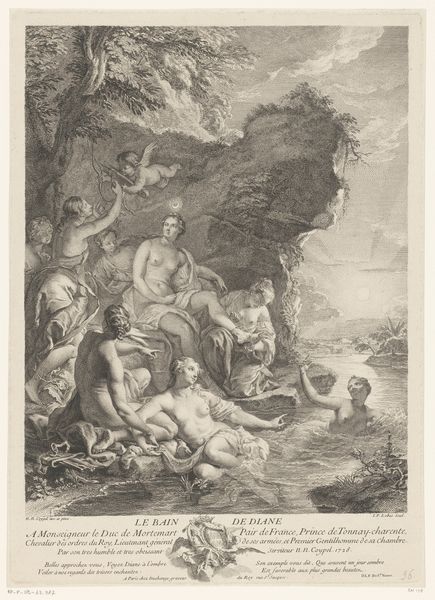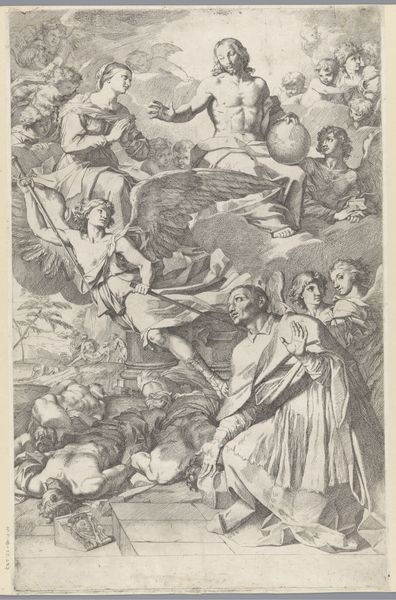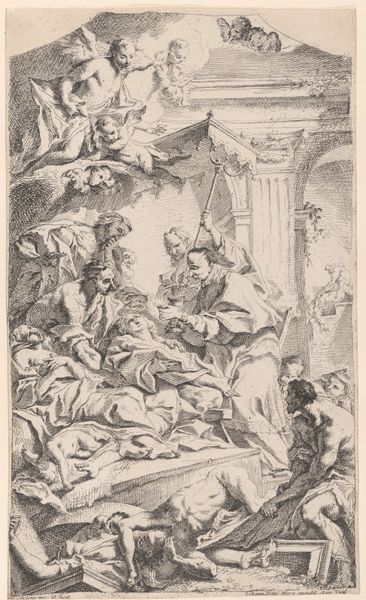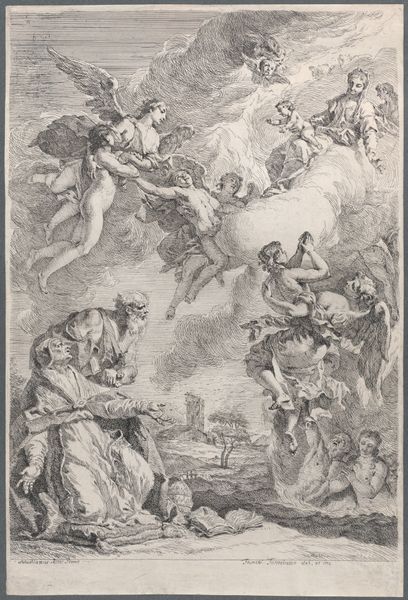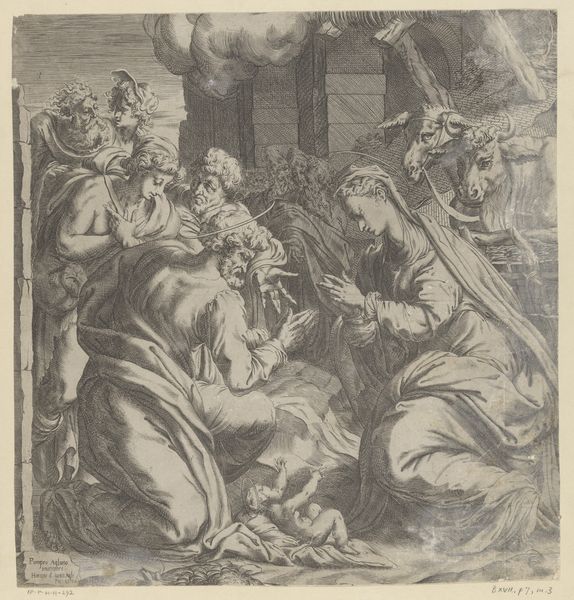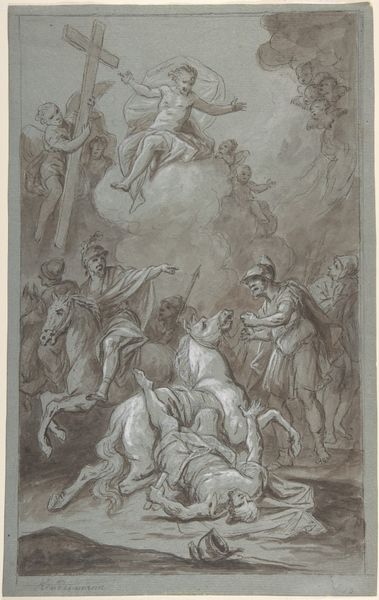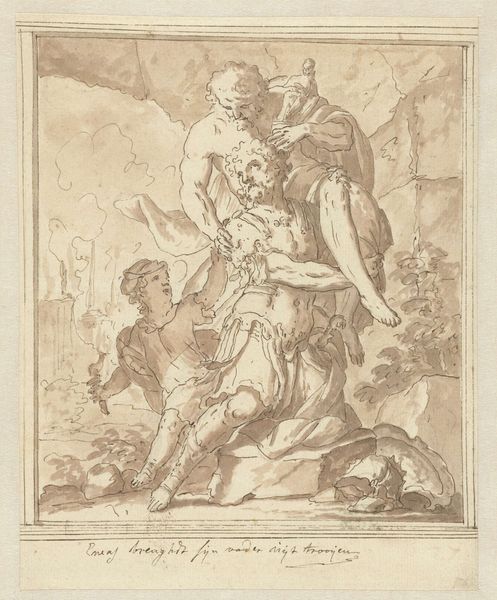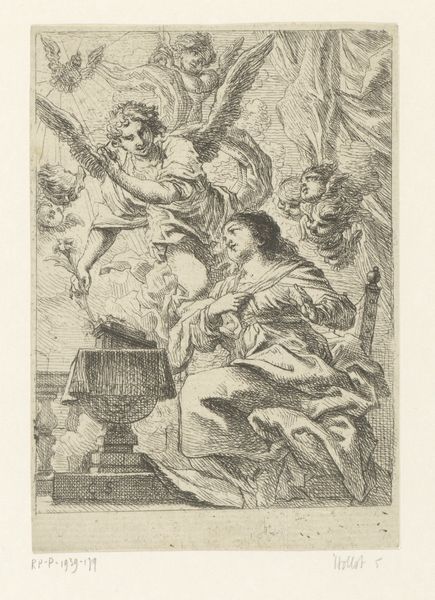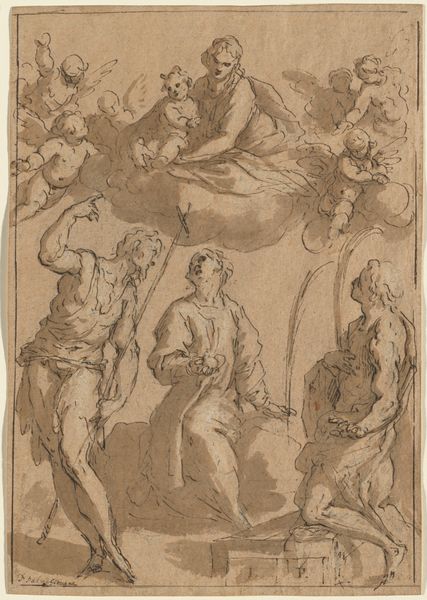
engraving
#
baroque
#
figuration
#
history-painting
#
engraving
Dimensions: height 252 mm, width 191 mm
Copyright: Rijks Museum: Open Domain
Curator: The flowing lines and dramatic gestures immediately signal the Baroque style. Editor: Absolutely. We’re looking at “Mythologische voorstelling met de godin Diana,” an engraving made around 1750 by Matthias Oesterreich. Diana, the Roman goddess of the hunt, is clearly central to the piece, literally elevated and holding a bow and arrow. Curator: Oesterreich’s choice of engraving as a medium speaks volumes. Consider the accessibility this offered – prints like these circulated widely, bringing mythological narratives into homes and workshops far beyond aristocratic circles. It's an interesting point about cultural dissemination in the 18th century. Editor: The composition is fascinating. It adheres to a pyramidal structure. Our eyes travel upwards to Diana in her chariot, guided by figures and surrounded by celestial motifs and end on what seem to be terrestrial activities like hunting, at the bottom. It uses allegories to speak about divine authority and earthly domains through the formal structure, color contrast and spatial illusion. Curator: Let's look at the labour involved. Every line, every gradation of tone, meticulously etched, would require extensive skill and patience and suggests a growing demand of these narratives. These images were functional; teaching, illustrating, disseminating knowledge and influencing cultural values of the public. Editor: The visual density certainly creates a sense of drama and importance of a powerful goddess in action. It's not merely representational but evocative in every sense, with Baroque emotional power! Curator: I'm particularly struck by the figures on the lower plane—the depiction of those mortal bodies. The engraver draws out their vulnerability and connects the viewer directly to this divine drama, creating engagement in a growing consumer base. Editor: Indeed. These historical details allow us to more accurately recognize that such complex compositions as we see were crafted under very certain economic and historical pressures. Curator: That is insightful. Now, I'm seeing new aspects to the arrangement myself that I previously had not picked up on. Editor: A closer inspection allows appreciation not just to the craftsmanship of Matthias Oesterreich, but how visual strategies evoke stories of human experiences in such times.
Comments
No comments
Be the first to comment and join the conversation on the ultimate creative platform.
